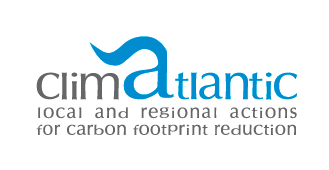PARTNERSHIP

QUIMPER COMMUNAUTE
FRANCE
http://www.quimper-communaute.fr
The Quimper Urban Agglomeration (Greater Quimper), gathers, with Quimper city, seven other municipalities: Plogonnec, Guengat, Plonéis, Pluguffan, Plomelin, Locronan, and Ergué Gabéric. This area comprises 90.000 inhabitants, for a surface of 28.115 hectares. They work collectively and lead together a joint project of urban development and territorial management.Grater Quimper exercises its competences in term of economic development, its regional territory management, habitat social balance (mandatory competences), wastewater management, environment protection and development, sports and cultural equipment construction and management (optional competences). Lastly, and under optional competences, the Urban Agglomeration intervenes for management policies, support for higher education, purchase of reserved areas, and contribution to the financing of the Finistère County Council Fire service.
In 2009, Greater Quimper affirmed its will to develop an ambitious and perennial sustainable development policy. Greater Quimper recognizes the territorial level as an essential actor for the sustainable development policies’ definition and implementation. Transverse practices were developed gathering socio-economic elected officials, inhabitants, economic actors and Urban community agents. Agenda 21 impacts all the policies, in a transverse and prospective coherent scheme.
In the specific context of the fight against climate change, the finalisation of Greater Quimper’s Agenda 21 Action Plan identified a strategic direction « Instigate and pilot a territorial energy strategy using a territorial climate project » which entails the community producing a co-ordinated plan of action for the future :
1. Fulfil French Environmental Act (Grenelle 2) obligations which require agglomerations of 50,000 plus inhabitants to put together a territorial climate plan before 2012.
2. To honour the undertakings agreed in 2010 by the Mayors Convention Charter which encourages member communities to exceed the 20% C02 emissions reduction by 2020, and to enlist the general population’s support in working out an action plan.
3. Take part in regional discussion by joining the Regional Energy Conference organised by the county and the state.
4. By attending workgroups which are part of the partnership network of the Energy and Greenhouse Gas Emissions Observatory in Brittany in order to contribute to current discussions.
5.Experimenting with new strategies whilst maximising the contribution of the ‘Climatlantic’ trans-national European project for which Greater Quimper’s candidature has been accepted.








